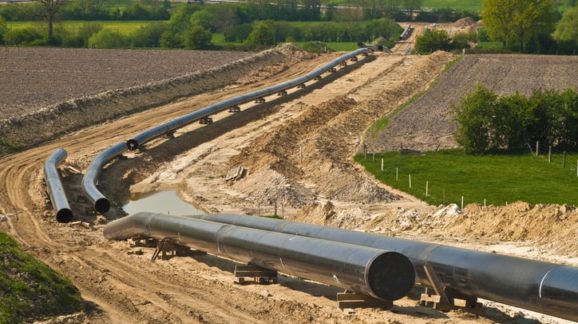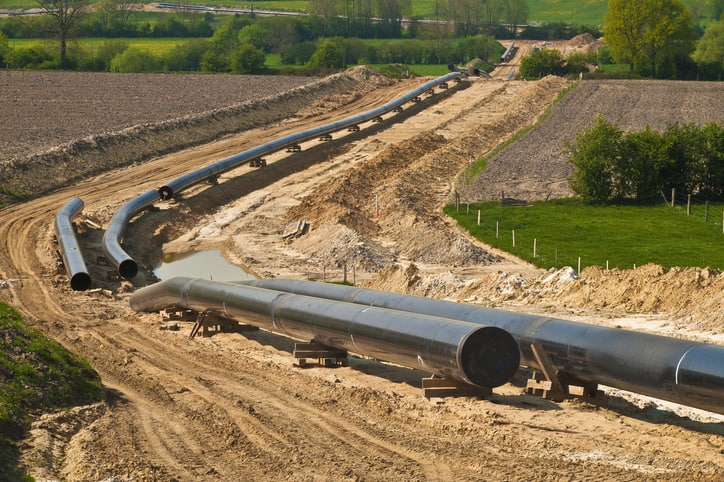NEPA Rule: Implications for Climate Policy

Photo Credit: Getty
 The White House Council on Environmental Quality (CEQ) this week published its final rule updating the procedures federal agencies must follow when conducting environmental reviews under the National Environmental Policy Act (NEPA). As my colleague Ben Lieberman observes, the rule will “streamline the federal permitting process for infrastructure like highways and pipelines.”
The White House Council on Environmental Quality (CEQ) this week published its final rule updating the procedures federal agencies must follow when conducting environmental reviews under the National Environmental Policy Act (NEPA). As my colleague Ben Lieberman observes, the rule will “streamline the federal permitting process for infrastructure like highways and pipelines.”
NEPA-required environmental impact statements (EISs) currently take an average of four and a half years to complete, with one quarter taking six years or longer. The analyses also have ballooned into encyclopedic tomes averaging 661 pages (not including appendices), with one quarter being 748 pages or longer (85 FR 43305). The final rule establishes presumptive time and page limits of two years and 150 pages. The updated regulations should not only help modernize American infrastructure, it should help Americans get back to work.
When proposing the rule in January, CEQ requested comment on how to revise its June 2019 draft guidance on NEPA consideration of greenhouse gas (GHG) emissions to ensure consistency with the updated procedural regulations, and whether or how the final rule should codify aspects of the GHG guidance (85 FR 7010-11). CEQ said it would prefer not to address a “single category” of environmental effects in a procedural rule applying to all significant effects of major agency actions (85 FR 1710). However, CEQ could not ignore the elephant in the room.
Although NEPA began to bog down project approvals in red tape and litigation long before climate change came to dominate environmental politics, the “climate crisis” narrative is now clearly at the forefront of both local and national opposition to the construction of pipelines, highways, and other critical infrastructure.
Moreover, the Obama CEQ’s 2016 GHG guidance attempted to institutionalize climate angst in NEPA proceedings by requiring agencies to analyze a project’s emissions in the context of the scary impacts projected by overheated climate models from global emissions. In addition, President Obama’s incitement of the unhinged anti-Keystone XL Pipeline campaign revealed that using NEPA as a climate policy framework would unavoidably embroil energy infrastructure in ideological controversy, block or delay actions whose economic benefits vastly outweigh any associated climate damages, and feed the hubris of those who believe government exists to bankrupt industries they don’t like.
So, what does the final rule say or imply about NEPA and climate change?
The main purpose of NEPA is to ensure agencies take a hard look at the potentially “significant” environmental “effects” of “major” actions before deciding to take those actions. Thus, the extent to which a project’s GHG emissions merit NEPA scrutiny depends on the meaning of “effect.”
The final regulations define the term as follows: “Effects or impacts means changes to the human environment from the proposed action or alternatives that are reasonably foreseeable and have a reasonably close causal relationship to the proposed action or alternatives, including those effects that occur at the same time and place as the proposed action or alternatives and may include effects that are later in time or farther removed in distance from the proposed action or alternatives” (85 FR 43375).
Although effects need not be near-term or nearby to be significant, they must be “reasonably foreseeable and have a reasonably close causal relationship to the proposed action.” The climate impacts of the greenhouse gas emissions of individual projects do not qualify. The climate effects of even the largest infrastructure project are undetectably small. Hence, such effects are not foreseeable at all, and project-related emissions have no traceable causal relationship to any climate-related effect anywhere on planet Earth, whether in the present or the remote future.
The regulations go on to state: “Effects do not include those effects that the agency has no ability to prevent due to its limited statutory authority or would occur regardless of the proposed action.” Here again, project-level greenhouse emissions do not make the cut. Anthropogenic global warming is a product of the cumulative sources and sinks of GHG emissions since the dawn of industrial civilization. Consequently, no permitting agency has either the physical capability or the statutory authority to control or prevent climate change impacts.
Does this mean agencies should simply ignore climate change in NEPA reviews? No. Although the climate impacts of individual projects are insignificant, climate change may have significant effects on individual projects and the communities in or near which they are located. The final rule explains: “In response to the [proposed rule], commenters expressed concerns that impacts of climate change on a proposed project would no longer be taken into account. Under the final rule, agencies will consider predictable environmental trends in the area in the baseline analysis of the affected environment. Trends determined to be a consequence of climate change would be characterized in the baseline analysis of the affected environment rather than as an effect of the action” (85 FR 43331).
For example, when reviewing a water-intensive project, it is useful to know whether the area is expected to become drier or wetter in the coming decades, or when reviewing a flood control project, whether flood frequency or intensity is expected to increase. However, the rule adds this caution: “Discussion of the affected environment should be informative but should not be speculative.”
For further discussion of NEPA’s unsuitability as a framework for coercive de-carbonization, see CEI’s joint comment letter on CEQ’s proposed updated NEPA regulations.